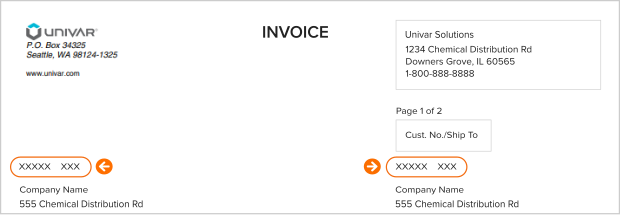We’re here to provide you with more information or help answer any questions you might have. Send us a note and we’ll get back to you as soon as possible.


It’s no secret that spending long hours in front of a screen glowing with blue light can take a toll on your body, causing eye strain, difficulty concentrating, and more. But what a lot of people don’t know, is that blue light exposure can have negative effects on your skin as well.
Let’s take a look into what blue light really is in today’s digital age, how it affects the appearance of your skin, and which skincare ingredients can help reverse the effects. If you’re looking to formulate blue light skincare (or just want to know the best options out there), you’ll want to stay tuned!
What Is Blue Light?
You may remember the acronym “ROY G BIV” from elementary school (to jog your memory: red, orange, yellow, green, blue, indigo, violet). Well, that knowledge will come in handy today. These colors make up the visible light spectrum. Each color on the spectrum has a different wavelength and energy level. Blue is the shortest wavelength and is also the closest to ultraviolet (UV) light which we know causes skin aging.
Sources Of Blue Light
How does it affect your skin in everyday life? Let’s take a deeper look.
-
Sunlight: This range of light that we can see produces what we know as “white light” or most commonly known as “visible sunlight”.
-
Lighting: As for man-made blue light sources, those include fluorescent and LED lighting as well as flat-screen televisions.
-
Screens: Did you know that some smartphone users spend 4 hours and 30 minutes per day on their devices? The display screens of smartphones, as well as laptops and tablets, emit significant amounts of blue light.
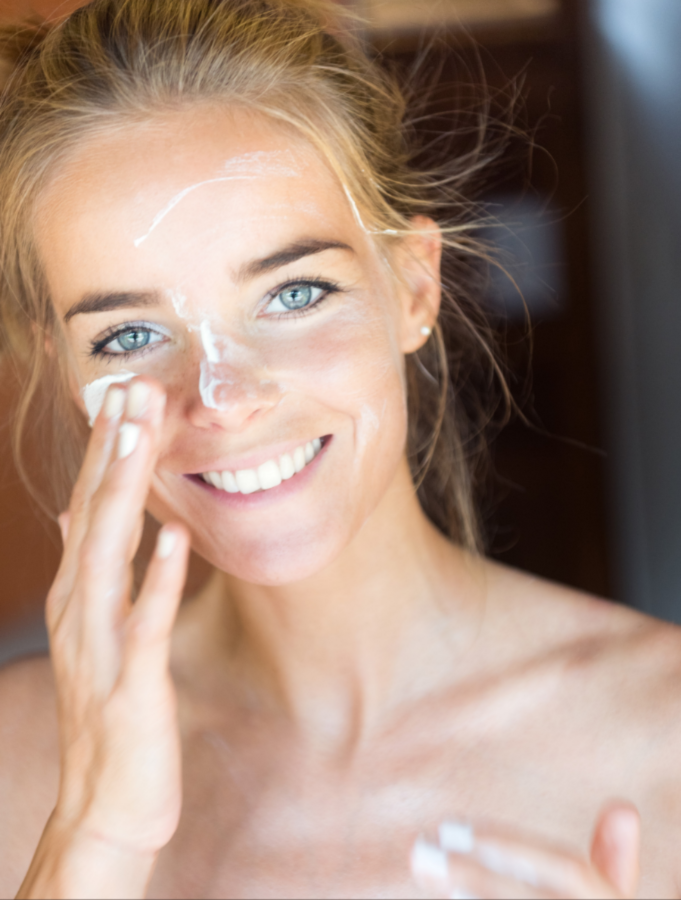

How Does Blue Light Affect Your Skin?
Most of us already have a firm grasp on the fact that ultraviolet (UV) light is damaging to the skin. In fact, it’s the main cause of photoaging and premature
aging of the skin (think: wrinkles, fine lines, hyperpigmentation, loss of elasticity, and more), as well as skin cancer.
Blue light and its effects on the skin aren’t as well documented as its UV counterpart. However, research shows that blue light exposure can lead to oxidative stress in the skin. This oxidative stress is what accelerates collagen breakdown, which then leads to fine lines and wrinkles. It may also be responsible for triggering some pigmentary conditions in the skin, such as melasma.


Is a Blue Light Skincare Routine Necessary?
If you’re asking yourself if a blue light skincare routine is an essential part of self-care or the key to great-looking skin, the answer is really up to you! At the end of the day, the largest source of blue light (AKA the sun) is really what you’ll need protection from day-to-day. This is why sunscreen is the best protection you have against premature skin aging (more on that below).
While checking a text message or binging a TV series isn’t going to wreak havoc on your complexion, you may want to consider a blue light skincare routine if you spend a lot of time in front of screens. In addition, because blue light is associated with screen time, you can also find yourself facing the effects of squinting. This action creates fine lines around the eyes—for which an excellent anti-aging or blue light
skincare routine can help.
Chances are, you’re reading this article on a device that emits blue light, so it’s worth
a look at the next ingredients!
Carotenoids
Carotenoids are the natural yellow, orange, red, or sometimes violet dyes found in plants, most notably carrots. Carotenoids are useful in absorbing the blue light spectrum and also act as antioxidants. One example in skincare is β-carotene which can also help alleviate acute or chronic photodamage and regulate sebum secretion. This ingredient can be used in many types of skincare products (moisturizers and creams are popular) and it works very well in synergy with vitamin E.
Titanium Dioxide
Titanium dioxide is similar to zinc oxide in many ways. Because of its ability to reflect the sun’s rays, titanium dioxide is used in mineral (AKA “physical”) sunscreens and is quite effective at protecting the skin from UVA and UVB damage as well as blue light. Unlike chemical sunscreens, which are formulated with ingredients to absorb damaging sun rays, titanium dioxide works by forming a protective barrier on your skin.
Iron Oxide
Next up on the list of important ingredients for sunscreens is iron oxide. This ingredient is often added to mineral sunscreens to improve the look of the dreaded “white cast.” You’ll often see it in tinted sunscreens, makeup shades, and cosmetic pigments. It typically comes in shades of red, orange, brown, and black. While iron oxide is effective at absorbing all wavelengths of visible light, it’s particularly effective at absorbing longer blue light.
Vitamin C
Vitamin C is an antioxidant powerhouse that you’ll definitely want in your skincare products. Antioxidants protect against blue light in the same way they help protect against UV rays, they prevent and/or banish free radicals in the skin. This is beneficial for your skin because free radicals can damage DNA and cause premature skin aging. Moreover, it also helps lighten dark spots, which helps if blue light is worsening your pigmentation. It’s most commonly formulated into a sunscreen or serum.
Zinc Oxide
Zinc oxide is a primary component in mineral (AKA “physical”) sunscreens, and it’s actually older than the SPFs we know and love today. Historical reports of the use of zinc oxide for medicinal purposes date back to as far as 500 BC! This white and powdery inorganic compound comes from mineral zincite, and is the reason why sunscreens create a white cast (a fancy term for when sunscreen turns your face white). While that part isn’t aesthetically pleasing, zinc oxide stays on the skin’s surface to reflect, scatter, and physically block light. This makes it a great ingredient for sunscreen (which is a great blue light-blocking skincare product)
Green Tea
Green tea and green tea oil are abundant sources of plant polyphenols (micronutrients that naturally occur in plants). Polyphenols have antioxidant effects which, as we have stated, are key to blue light-blocking skincare products. Green tea has anti-fungal/anti-viral effects in protecting the skin, as an added bonus! Green tea pairs perfectly with SPF and is commonly found in serums and moisturizers.
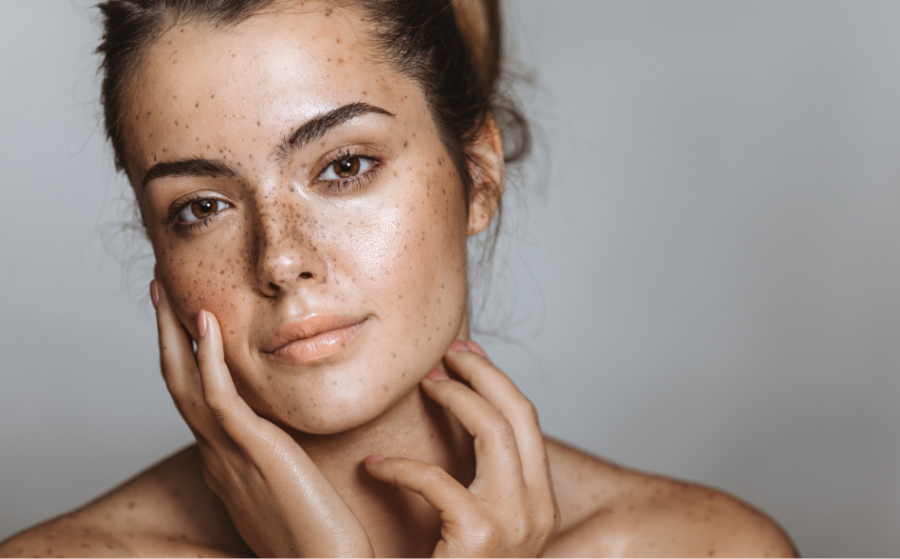



Blue Light Skincare FAQs
We understand there are a lot of new(ish) concepts when it comes to blue light and skincare. Let’s review some of the main points.
Does Blue Light Skincare Work?
Yes, blue light skincare provides protection against the damaging effects of blue light. It works by physically blocking the light and fighting off free radicals formed by blue light (e.g., photoaging, fine lines, wrinkles, sagging, and dark spots) as a preventative measure.
Is Blue Light Skin Protection Necessary?
While blue light skin protection isn’t an absolute necessity, protection from visible light (most notable: ultraviolet AKA UV light) is the top-rated dermatological skincare step you can take in your morning routine. So while it isn’t essential, it’s still probably a good idea to use sunscreen every day to protect your skin from the damaging effects of the sun.
Since you can’t avoid screens in today’s technological climate, being proactive to avoid more damage is always a good idea. If you find yourself glued to a screen many hours of the day, you will want to consider a blue light-blocking skincare routine.
Is Blue Light Damaging to Skin?
Blue light can damage the skin by inducing oxidative stress, which happens when there is an imbalance between free radicals and antioxidants in your body. Blue light can also cause photoaging or skin aging caused by light waves, which is the same thing that UVA and UVB rays do to the skin
Formulate Blue Light Skincare Products With Us
At this point, you may be interested in formulating your own blue light skincare regimen. Whether you’re looking for specific specialty ingredients, have a formulation or technical challenge, need application testing, or are looking for support to scale up and launch in a new & dynamic market, we can help.
Shop Ingredients for Blue Light Skincare Products
Want to shop ingredients and understand how they work together? For example, sunscreens formulated with iron oxides provide enhanced protection against blue light, especially when combined with zinc oxide. In addition, iron oxides tend to work well with all ingredients! Reach out for our expertise on ingredients or browse for an overview of our selection.


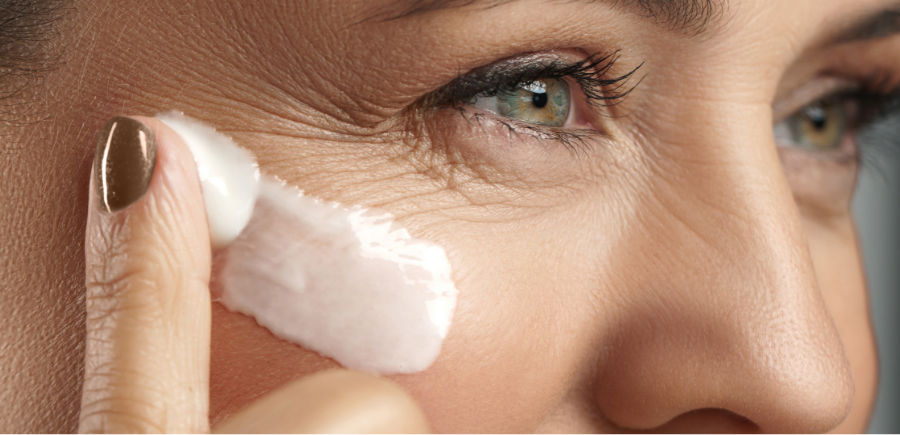

Contact Us for Formulation Support
Trends will never stop evolving, and through our global network of customers, suppliers, partners, marketers, scientists, and technical experts, we can keep a pulse on changes in the industry to help you create the formulations you need. If this sounds like something you need, get in touch with our team so we can make your goals a reality.
The following are some of the most common parts of a tunnel car wash:
1. Entrance arch: Entry point of the car wash tunnel and where the conveyor usually starts
2. Chemical tire applicator: Sprays tires with cleaning solution (varying pH levels)
3. Wraps/Brushes: Mechanical action that aids soaps in the cleaning process
4. Wax applicator: Applies wax in a foam application or spray system for additional gloss
5. Top brush: Aids cleaning products to focus on cleaning the top of the vehicle
6. Spot-free rinse arch: Applies reverse osmosis (RO) water as a final rinse to eliminate water spots during drying
7. Online tire dressing applicator: Adds additional shine to tires
8. Blowers/dryers: Aids in the final drying process of the vehicle
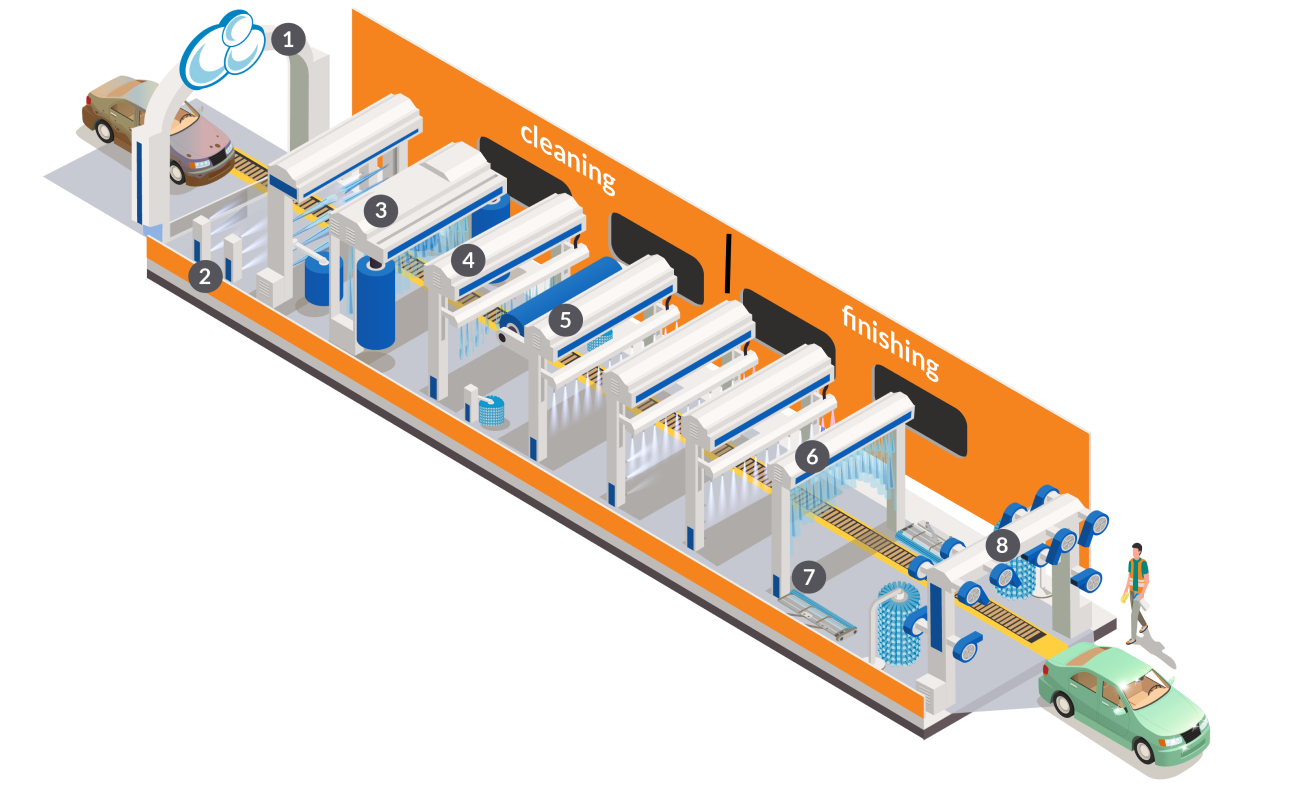

Tunnel car washes can be broken down into two sections:
Tunnel car wash cleaning – This first section gets all the soil and organic materials off the car. It uses surfactants to reduce the water's surface tension so that water droplets lay flat to get better coverage to clean the car with optimal results. It sets the vehicle up for a shiny, durable protection layer on the finishing side.
| Tunnel Car Wash Cleaning Applications | |
| Bug Remover | Base, anionic surfactants, nonionic surfactants, chelating agents, anti-redeposition agents, solvent |
Wheel Cleaner | Base, anionic surfactants, nonionic surfactants, chelating agents, anti-redeposition agents, solvent |
Alkaline/High pH Presoak | Base, anionic surfactants, nonionic surfactants, chelating agents, anti-redeposition agent |
Boosters | Boosters can be used to customize presoaks or add additional capabilities |
Low pH Presoak | Acid, anionic surfactants, nonionic surfactants, anti-redeposition agent |
Neutral Foamer | Anionic surfactants/amphoteric surfactants, chelating agents |
Conditioner | Anionic surfactants/amphoteric surfactants, dye, fragrance, chelating agents, or ph adjustment |
Tunnel car wash finishing – This second section of the process involves polishes, protectants, and waxes to create more surface tension changes for droplets at the end of the wash. A more hydrophobic surface is needed so the droplets will bead up for effective drying. These are options for consumers to select as service package add-ons that are regularly not included with a car wash.
For example, triple foams provide more color fragrance, or top packages have more protectants, which last for about a month. Silicone resins and functional silicones protect the car for a glossy, smooth finish and help with durability by offering increased resistance to micro scratches and debris on the road.
| Tunnel Car Wash Finishing Applications | |
| Polish | High levels of foam using amphoteric surfactants, color, and fragrances. Contains a gloss agent: silicone or wax emulsion |
| Carnauba Wax | carnauba emulsion, amphoteric surfactants |
| Rain Protectant | silicone emulsions, cationic surfactants, amphoteric surfactants, nonionic surfactants, EB |
| Ceramic Seal | silicones - amino functionals, cationic surfactants, amphoteric surfactants, nonionic surfactants, EB |
| Drying Agent | Mineral seal oil, nonionic surfactants, cationic surfactants, EB |
| Tire Shine | Silicone (PDMS), wetting agent, rheology modifier, either solvent or water, and emulsifier) |
| Spot Free Rinse | RO Water |
For tunnel car wash equipment performance, it's about striking a balance to ensure the vehicle is cleaned best BEFORE the finishing process. Otherwise, it will magnify and preserve the dirt under these protective layers. Since both applications are doing different things with the surface tension, facility owners need to be sure that the second part of the process begins at the right time to make vehicle surfaces more hydrophobic and shed water rather than further spreading it out.
Is it better to go to a car wash or wash at home?
The car wash market has seen steady growth over the past 20 years. International Carwash Association (ICA) research indicates that in 1996, 52.4% of consumers preferred at-home washing rather than going to a car wash. However, in 2014, that number reduced to 28.4%, with growth from 74.6% to over 71.6% of consumers favoring professional vehicle cleaning services. In 2019, it was estimated to be approximately 77%. Rather than washing at home, the benefits of going to a car wash include the following:
- Convenience – Professional car wash facilities, especially tunnel car washes, offer time-saving convenience, which customers value. This includes the frequent adoption of mobile apps for online reservation booking systems to skip waiting lines and mobile payment systems for easy, cashless transactions.
- Affordability – A tunnel car wash averages around $15, depending on the type of specialty services also provided. Basic car washes are just about the same as spending for washing at home when you factor in the cost of soaps, sponges, cloths, buckets, and other necessary materials. However, car washes can provide more thorough cleaning specialties for a relatively low additional expense. Popular add-ons include undercarriage and engine cleaning; adding wax coats; tire cleaning; and interior deodorizing and sanitation. Many tunnel car wash operations offer customers loyalty benefits, including free washes and services for repeat visits.
- Investment protection – Beyond vehicle hygiene, car washes can help sustain a car's value over time. This is especially vital when consumers look to sell or trade in an automobile, and the condition receives appraisal. Regular professional washes and add-on services like clear-coat protection can help guard a vehicle against UV rays, moisture, and various environmental impacts. Other typical road adversities, such as mud, grass clippings, bird droppings, and numerous corrosive types of debris that cause rust and paint fading can also impact the vehicle's overall value.
- Improved fuel efficiency and maintenance – Believe it or not, regularly washed cars help to improve a vehicle's fuel economy. Layers of dirt and grime can potentially decrease airflow across the surface, making it less aerodynamic and increasing drag, which boosts the vehicle's fuel usage. Regular car washes can help save gas and prolong the vehicle's life to keep it on the road longer.
- Easier winter washing – The busiest time for car washes is during the winter when 32% of consumers opt to wash their vehicles (mainly because of the road salt on icy roads). Tunnel car washes provide a quicker, more convenient way to clean the car rather than washing it at home by hand in less than favorable, oft-rigid winter weather conditions.
- Sustainability – It can be more environmentally conscious for consumers to take their vehicles to a tunnel car wash. Newer car wash facilities use water reclamation systems that reuse 90% of the water, so only 9 to 15 gallons of fresh water are used during the entire washing cycle. This is far less water than the estimated 40 to 140 gallons it can take to wash a car at home in a driveway. Additionally, at-home soap products and road debris are deposited directly into the city's water supply through storm drains. Car washes, however, have more wastewater regulation and are generally cleaned better. The sustainable approach is better for business, too. Tunnel washes currently optimizing water usage and green chemicals can reclaim and reuse water for eco-friendliness, and these operations can also turn cars faster on their conveyors.
Automated car wash tunnel maintenance
In addition to cleaning hundreds of vehicles daily, car wash management must also take measures to provide the best cleaning care for the facility itself. After all, no customer feels confident that their vehicle will look better after pulling into a car wash with dirty tunnel walls. Beyond an ideal business practice, proper maintenance can drastically improve a tunnel car wash's life expectancy and equipment (usually a 10-year life cycle).
There are now applications that use enzymes and microbes to clean the wraps, which reduces the amount of preventative maintenance. Mechanical action also improves when facilities do not use dirt-laden brushes to clean the car. Car wash owners must also stock up on cleaning supplies such as laundry detergents to clean the microfiber towels used for drying, glass cleaner for the facility's windows, and concrete cleaner to scrub the tunnel car wash walls.
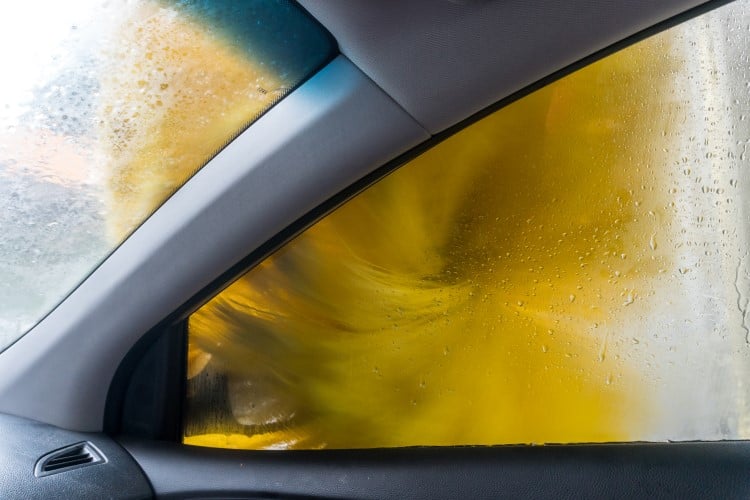

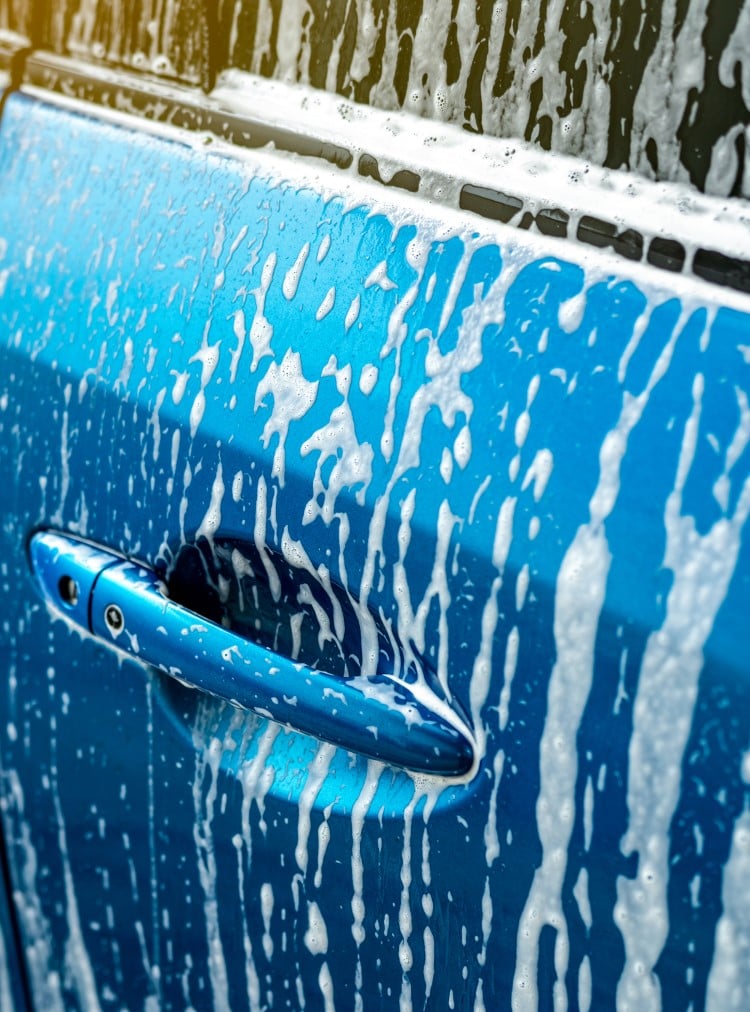

Sustainability and the future of tunnel car wash operations
Compared to other global industries, the car wash space has needed to be faster to adopt sustainable solutions, mainly due to the cost-effectiveness of some frequently used chemistries (such as phosphates to chelate). However, considerable strides are rapidly advancing throughout the industry, especially with tunnel car washes and their universal usage of water reclaim systems. While water reclaim systems are primarily optional, they are also legally required in some areas. As car washes face climate challenges, many owners have turned to solar power and LED lighting. Some facilities even use sonar technology to customize the wash based on the vehicle size, reducing waste and the amount of water used!
The industry is moving away from inexpensive – but potentially harmful – chemicals like hydrofluoric acid toward greener, phosphate-free products and sustainable solutions such as biodegradable surfactants Beyond Green Cleaning and products, which are 100% natural and eco-friendly. Sustainability is becoming a more critical tenet among consumers than ever, especially for Gen Zers and millennials. Customers want to be sure the businesses they support and the services they use do not negatively impact the environment or drain community resources. They are even willing to pay more for sustainable options to avoid doing so. By already taking steps toward a greener future, the tunnel car wash industry is well-positioned to continue thriving.
At less than a century old, the business has continuously adapted to keep pace with technological advancement, chemical ingredient improvements, various levels of regulation, and, perhaps the most daunting of all, consumer trends.
While the world and consumers around this industry have changed drastically since its beginning over 80 years ago, there is one constant that the tunnel car wash industry can rely on: Drivers will always need clean cars. And the speed and convenience of the tunnel car wash can get them on the road sooner – whether for work, play, or embarking on their next adventure.
Resources
References:
Aquabio, Car Wash History: From Simple Beginnings to Modern Day Features: https://aquabio.co/uncategorized/blog/car-wash-history-from-simple-beginnings-to-modern-day-features/
Automatic Vehicle Wash, Tunnel Systems: https://avwequipment.com/equipment-category/tunnel-systems/
Carwash.com, 5 long-lasting benefits of carwashing: https://www.carwash.com/5-long-lasting-benefits-carwashing/
Carwash.com, Going green: Save electricity, water and money: https://www.carwash.com/going-green-save-electricity-water-and-money/
Carwash.com, Lessons in carwash tunnel layout: https://www.carwash.com/lessons-carwash-tunnel-layout/
Detail Pro POS, 20 Car Wash Statistics in 2021 That Will Surprise You: https://www.detailpropos.com/blog/car-wash-statistics/
Focusedcarwash.com, Car Wash Industry Statistics: https://focusedcarwash.com/wp-content/uploads/2017/09/industry-statistics.pdf
How It Works, How does a car wash work?: https://www.howitworksdaily.com/how-does-a-car-wash-work/
JBS Industries, 10 Trends You Should Know About the Car Wash Industry: https://www.jbsindustries.com/blog/10-trends-you-should-know-about-in-the-car-wash-industry/
JBS Industries, Best Car Wash Add-Ons: https://www.jbsindustries.com/blog/car-wash-add-ons/
PSD Codax, Tunnel Car Wash Systems - A Beginner's Guide to Tunnel Car Wash Systems: https://www.psdcodax.com/tunnel-car-wash-systems-a-beginners-guide-to-tunnel-car-wash-systems/
Sunset North Car Wash, Here's What (Tunnel) Car Washes Are Really Doing to Your Car: https://sunsetnorthcarwash.com/2022/11/28/heres-what-tunnel-car-washes-are-really-doing-to-your-car/
Synchrony, 5 Reasons to Visit the Car Wash - and What to Watch Out For: https://www.mysynchrony.com/blog/automotive/5-reasons-to-visit-the-car-washand-what-to-watch-out-for.html
Thompson Sales Company, Wash Your Car Yourself or Take It Somewhere: https://www.thompsonsales.com/wash-your-car-yourself-or-take-it-somewhere/
Tommy's Express, Do clean cars improve gas mileage?: https://tommys-express.com/blog/do-clean-cars-improve-gas-mileage/
Way.com, Tunnel Car Wash - All you need to know: https://www.way.com/blog/tunnel-car-wash-all-you-need-to-know/
Way.com, All you need to know about clean cars and fuel efficiency: https://www.way.com/blog/clean-car-and-fuel-efficiency/
Western Carwash Association, Water Conservation: https://www.wcwa.org/page/WaterConservation





